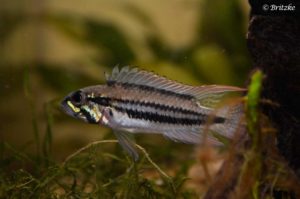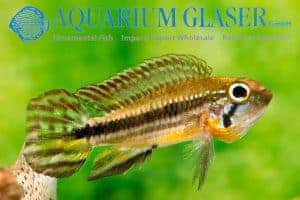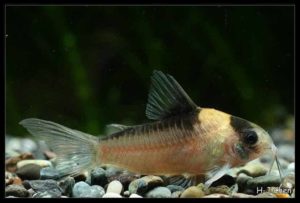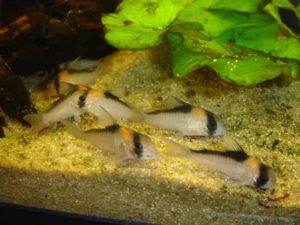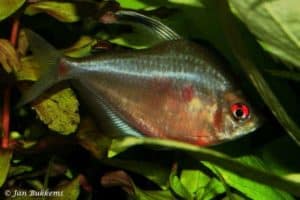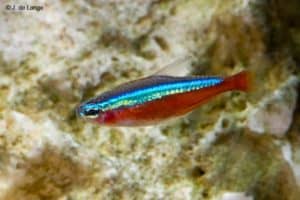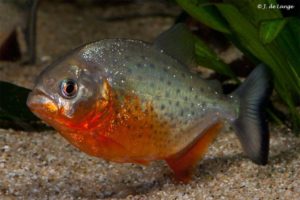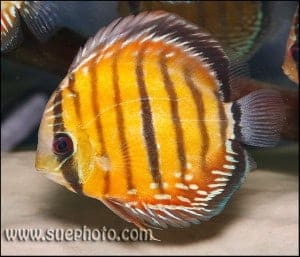Rio Negro

Rio Negro
The Rio Negro is one of the most iconic and ecologically important rivers in the world. As the largest blackwater river and one of the ten largest rivers in terms of water volume, it is the lifeline of a unique and fragile part of the Amazon basin. Its distinctive dark waters are home to extraordinary biodiversity and many beloved aquarium fish.
General – Origin and Meaning of the Name
The name Rio Negro is Portuguese and Spanish for “Black River.” This name was given by the Spanish explorer Francisco de Orellana in 1541, who was struck by the strikingly dark color of the water of this tributary during his journey down the Amazon.
However, the black color is not due to mud or pollution. The water of the Rio Negro is actually extremely clear, similar to tea. The dark, reddish-brown hue is caused by a high concentration of humic acids and tannins. These substances leach from the slowly decomposing vegetation (leaves, branches, roots) of the surrounding, seasonally flooded forests. Because the river originates in the Guiana Shield, a geologically ancient area with sandy soils, the water contains very little sediment, which contributes to its clarity.
Description – Length, Origin, and Destination
The Rio Negro has a total length of approximately 2,250 kilometers. The river originates in eastern Colombia, in the department of Guainía. Here, the upper reaches are known as the Río Guainía.
The river flows in an easterly and southeasterly direction, forming part of the border between Colombia and Venezuela, and then flows into Brazil. It eventually empties into the Amazon River (which at that point in Brazil is called the Rio Solimões).
The “Encontro das Águas”
The confluence of the Rio Negro and the Rio Solimões is a world-famous natural phenomenon known as the Encontro das Águas (“Meeting of the Waters”). Near the city of Manaus, the black, acidic water of the Negro and the sand-colored, sediment-rich water of the Solimões flow side by side for kilometers without mixing. This is due to the large differences in:
- Temperature: The Rio Negro is warmer (approx. 28°C) than the Solimões (approx. 22°C).
- Flow velocity: The Solimões flows considerably faster.
- Density and pH: The acidic, sediment-rich water of the Negro has a different density than the neutral, sediment-rich water of the Solimões.
Major Cities on the River
Unlike many other major rivers, the Rio Negro flows through a largely unpopulated and unspoiled area. The most important cities are:
- Manaus (Brazil): The metropolis and capital of the state of Amazonas, located on the northern bank of the Rio Negro, just before it joins the Amazon. It is the region’s main port and economic hub.
- São Gabriel da Cachoeira (Brazil): An important city in the upper reaches, known for its large indigenous population.
Important Tributaries
The Rio Negro itself also has an extensive drainage basin with numerous tributaries. The most important are:
- Rio Branco: The largest tributary. Remarkably, this is a whitewater river that carries sediment and minerals from the north, which influences the water chemistry of the lower reaches of the Rio Negro.
- Rio Vaupés (or Uaupés): An important blackwater tributary that flows from Colombia.
- Rio Içana
- Rio Cuiuni
Habitat and Biodiversity
The habitat of the Rio Negro is dominated by the Amazon rainforest. A crucial part of the ecosystem are the igapós: seasonally flooded forests. During the high water season (roughly from April to September), the river rises by up to 10-15 meters and floods kilometers of forest. Fish then swim among the trees to feed on fruits, seeds, and insects that fall into the water.
The ecosystem is oligotrophic, which means it is extremely poor in nutrients. The acidic conditions limit the growth of algae and microorganisms, resulting in clear water. Despite this apparent inhospitability, biodiversity is enormous and highly specialized. The habitat is under pressure from deforestation, illegal gold mining (which causes mercury pollution), and the growth of urban areas such as Manaus.
Biodiversity and Fish Species
It is estimated that between 800 and 900 fish species live in the Rio Negro basin, many of which have not yet been scientifically described.
The Rio Negro is the ‘holy grail’ for many aquarium enthusiasts. The unique water values have led to the evolution of some of the most colorful and sought-after fish in the hobby:
- Cardinal tetra (Paracheirodon axelrodi): By far the best known and most exported fish from the region. Red-nosed tetra (Petitella bleheri): A popular schooling fish, known for its bright red nose.
- Discus fish (Symphysodon discus, especially the Heckel Discus): Iconic cichlids that are perfectly adapted to soft, acidic water.
- Altum Moonfish (Pterophyllum altum): Found in the upper reaches of the Negro and Orinoco rivers.
- Dwarf cichlids (especially Apistogramma spp. and Mikrogeophagus ramirezi): Countless species of dwarf cichlids live in the shallow, leaf-covered zones.
- Various L-numbers / Armored catfish: Many species of Ancistrus, Peckoltia and Hypancistrus occur here.
Biotopes
The Rio Negro has several distinct biotopes.
1. The Flooded Igapó (Blackwater Forest)
- Description: This is the most characteristic biotope. During high water, the forest floor is meters deep under water. The water is dark, the current is minimal, and visibility is limited. The bottom is covered with a thick layer of leaves, branches, and seeds. Fish navigate between the submerged tree trunks and root systems.
- Habitat Correct Aquarium:
- Aquarium size: At least 100 cm for a good representation.
- Substrate: A thin layer of fine, white sand.
- Hardscape: The absolute focus is on a tangle of driftwood and thin branches (spiderwood) reaching from top to bottom to mimic submerged trees and roots.
- Leaf litter: A thick layer (5-10 cm) of dried leaves (Catappa, oak, beech) is essential.
- Planting: None or very little. Most aquatic plants do not survive in this extremely acidic and dark water. Floating plants such as Pistia or Salvinia are a good option to further dim the light.
- Lighting: Very dim.
- Fish: A large school of Cardinal tetras, a pair of Discus fish, or a harem of Apistogramma dwarf cichlids.
2. The Shore Zone of an Igarapé (Small Creek)
- Description: These are the smaller tributaries and creeks that flow into the main river. The water here is shallower and can receive slightly more light. The current is weak. The banks are often sandy beaches littered with leaves and branches.
- Correct Aquarium Biotope:
- Aquarium size: From 60 cm possible.
- Substrate: Fine, light-colored sand.
- Hardscape: A few pieces of driftwood and branches that simulate an overhanging bank.
- Leaf litter: A light layer of leaves scattered over the bottom.
- Planting: Limited planting is possible here. Consider species that tolerate low light and soft water, such as sword plants (Echinodorus spp.) or water trumpets (Cryptocoryne spp.) that grow in the shore zone.
- Lighting: Subdued, but slightly brighter than the Igapó biotope.
- Fish: A school of red-nosed tetras, a group of Corydoras armored catfish (such as C. adolfoi), and a pair of Ramirezi dwarf cichlids.
Water values
The water values of the Rio Negro are extreme and form the core of its unique ecology.
| Parameter | Upper course (Río Guainía) | Middle course | Lower course (near Manaus) |
|---|---|---|---|
| Temperature | 26°C – 31°C | 26°C – 30°C | 27°C – 32°C |
| pH value | 4.0 – 5.0 (extremely acidic) | 4.5 – 5.5 (very acidic) | 5.0 – 6.5 (acidic to slightly acidic) |
| GH (Total Hardness) | < 1 °dGH (extremely soft) | < 1 °dGH (extremely soft) | 1 – 3 °dGH (very soft) |
| KH (Carbonate Hardness) | < 1 °dKH (no buffer) | < 1 °dKH (no buffer) | 1 – 2 °dKH (very low buffer) |
| Conductivity | 10 – 20 µS/cm | 15 – 30 µS/cm | 20 – 60 µS/cm |
| Visibility | Very clear (tea-colored) | Very clear (tea-colored) | Clear, but affected by Rio Branco |
Important notes:
- Extremely soft: The water is essentially demineralized rainwater, enriched with organic acids. The hardness (GH and KH) is almost immeasurably low. This makes the pH value very unstable, unless sufficient humic acids are present.
- Influence of the Rio Branco: The lower reaches of the Rio Negro are influenced by the inflow of the Rio Branco. This whitewater river carries more minerals, causing the pH, hardness, and conductivity to increase as the river approaches Manaus. This explains the slightly higher values in the table for the lower reaches.
I hope this detailed description gives you a complete understanding of the unique and beautiful Rio Negro.
Fish species in the Rio Negro
Below you will find the fish species that we have included in the database and that occur in the Rio Negro.
Showing all 39 results
Showing all 39 results





